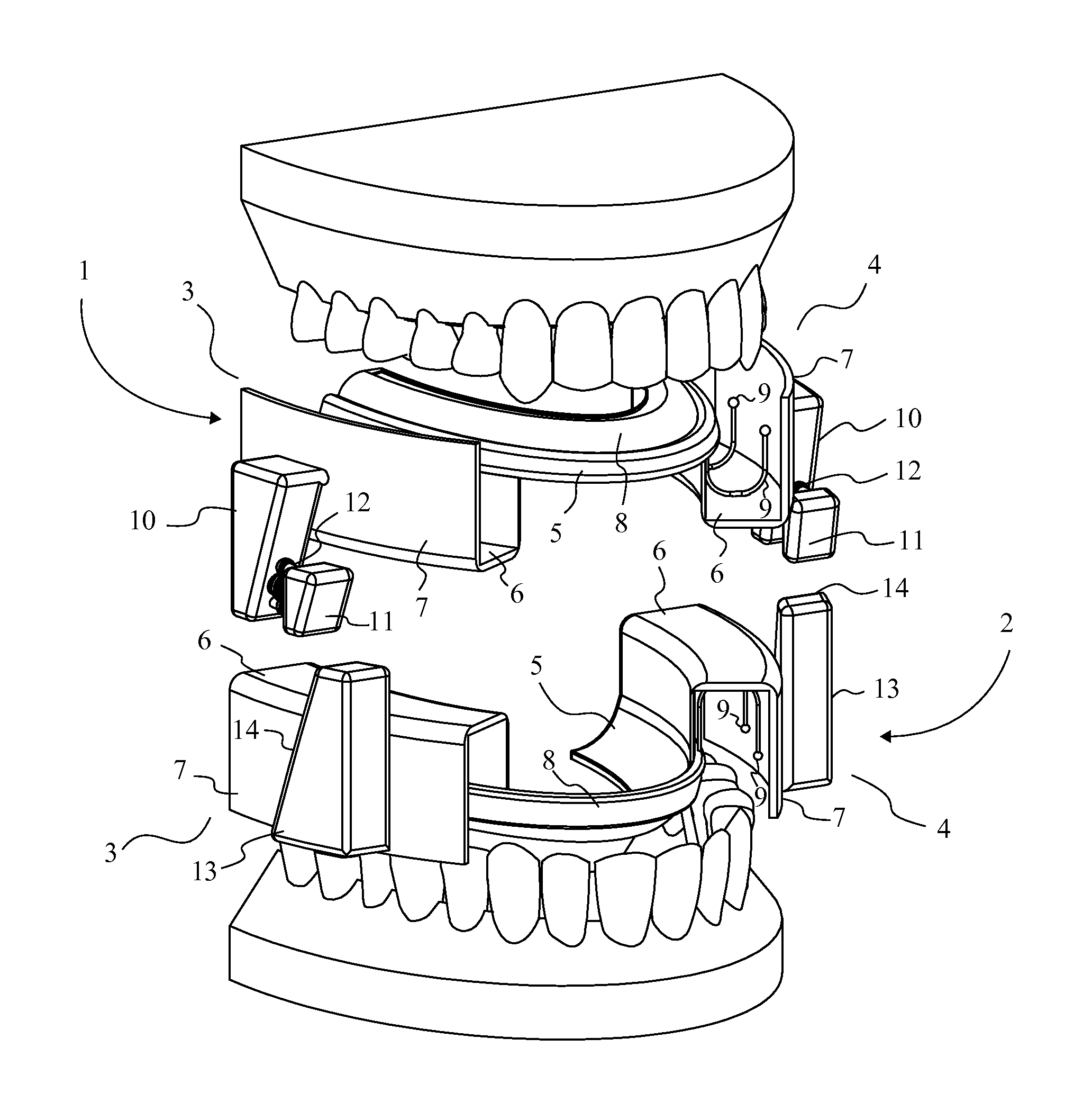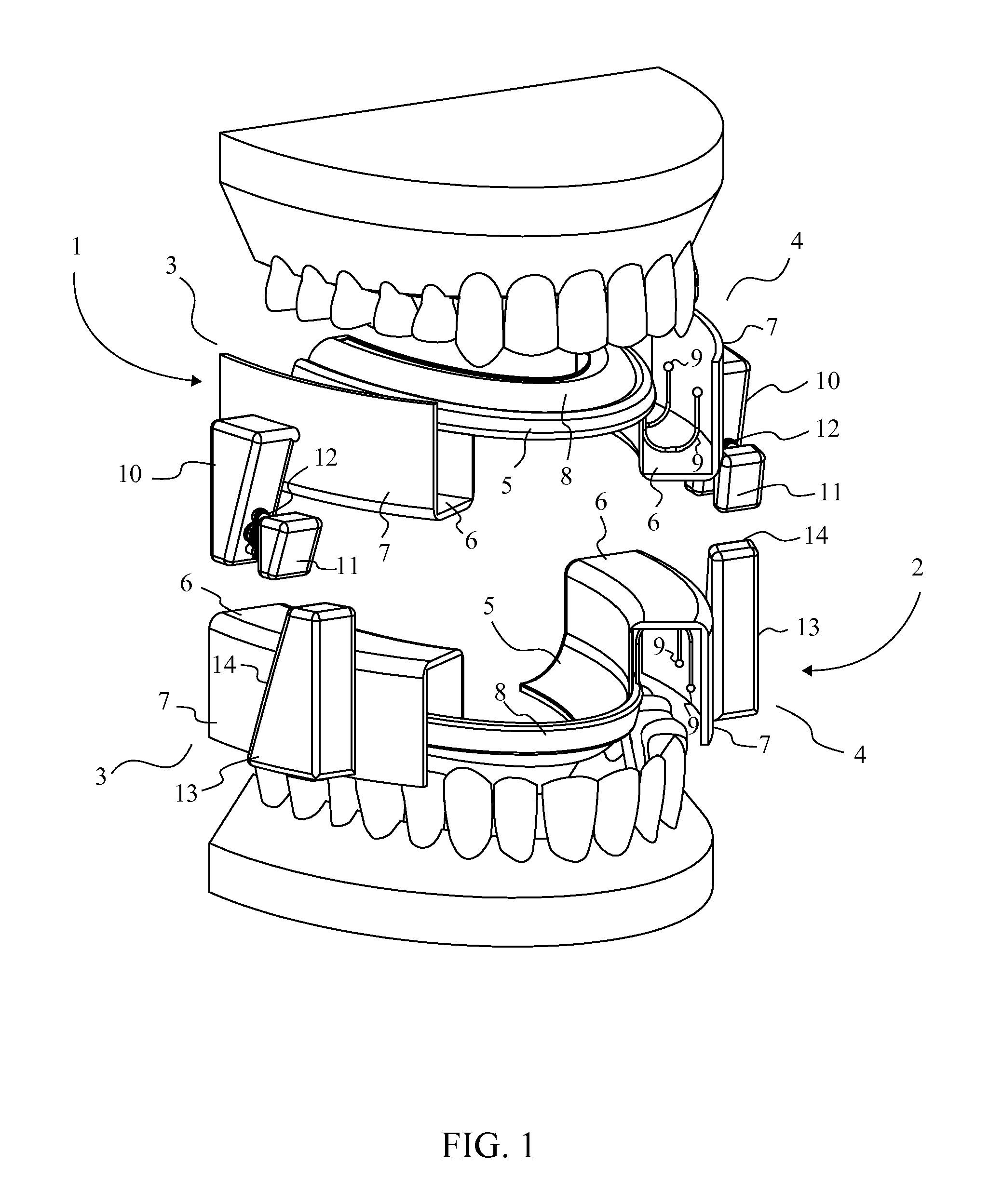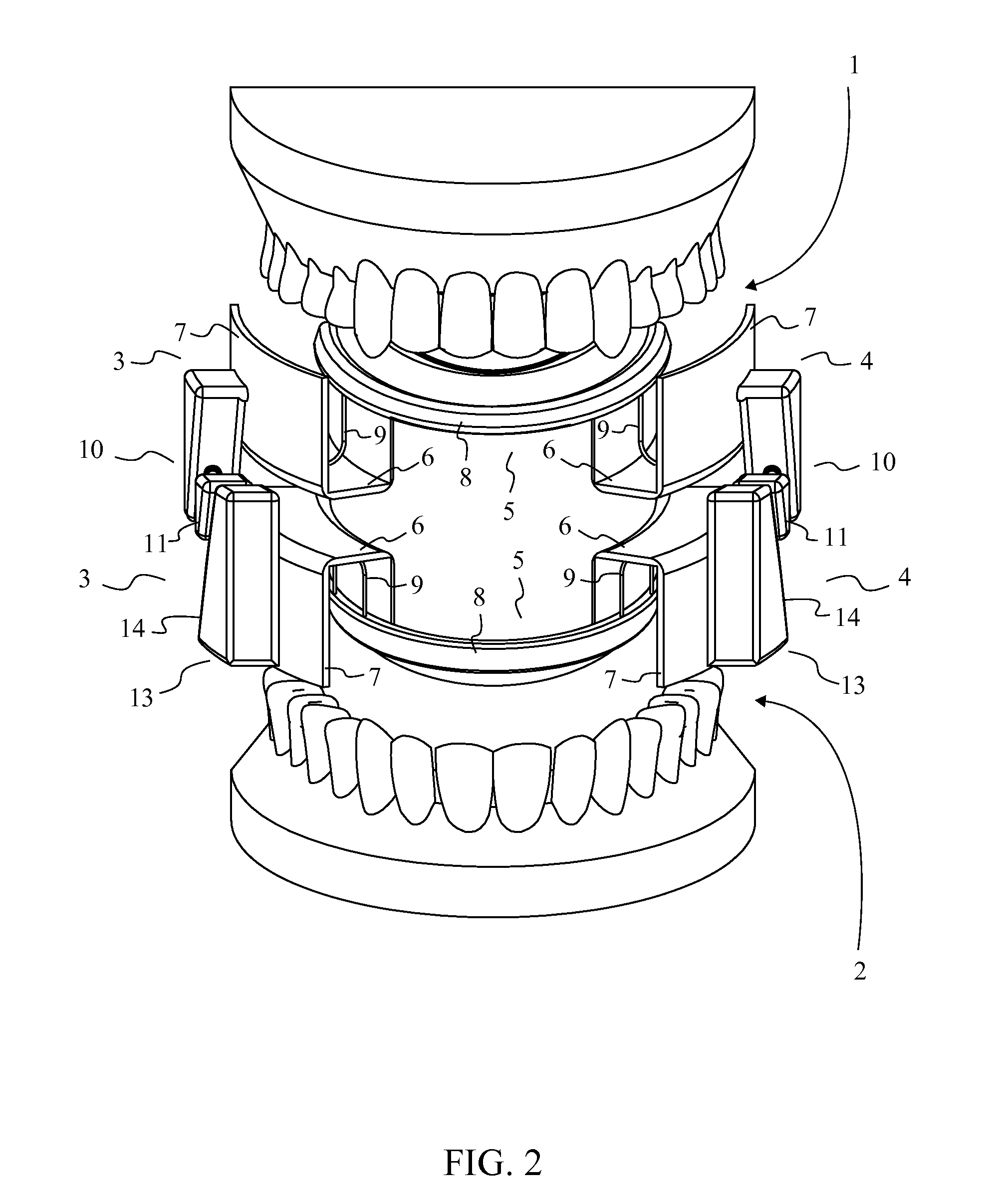Oral Sleep Apnea Device
a technology for managing airways and sleeping apnea, which is applied in the field of mandibular advancement splints, can solve the problems of waking up at night, increasing the risk of cardiovascular disease, stroke, and snoring, and reducing the safety of patients, and reducing the risk of snoring
- Summary
- Abstract
- Description
- Claims
- Application Information
AI Technical Summary
Benefits of technology
Problems solved by technology
Method used
Image
Examples
Embodiment Construction
[0015]All illustrations of the drawings are for the purpose of describing selected versions of the present invention and are not intended to limit the scope of the present invention.
[0016]Referencing FIG. 1, the present invention is an oral sleep apnea device provided as a treatment option for patients suffering from obstructive sleep apnea (OSA). The device relieves the respiratory obstruction through the advancement of the lower jaw in a process commonly referred to as mandibular advancement. By performing a mandibular advancement, the present invention is able to move the tongue forward, preventing the tongue from occluding the tracheal entrance. The device additionally allows user's increased lingual comfort during use by eliminating direct contact with the incisal surfaces and the labial surfaces of the anterior teeth. The present invention comprises a maxillary dental plate 1 and a mandibular dental plate 2. The maxillary dental plate 1 and the mandibular dental plate 2 are bo...
PUM
 Login to View More
Login to View More Abstract
Description
Claims
Application Information
 Login to View More
Login to View More - R&D
- Intellectual Property
- Life Sciences
- Materials
- Tech Scout
- Unparalleled Data Quality
- Higher Quality Content
- 60% Fewer Hallucinations
Browse by: Latest US Patents, China's latest patents, Technical Efficacy Thesaurus, Application Domain, Technology Topic, Popular Technical Reports.
© 2025 PatSnap. All rights reserved.Legal|Privacy policy|Modern Slavery Act Transparency Statement|Sitemap|About US| Contact US: help@patsnap.com



